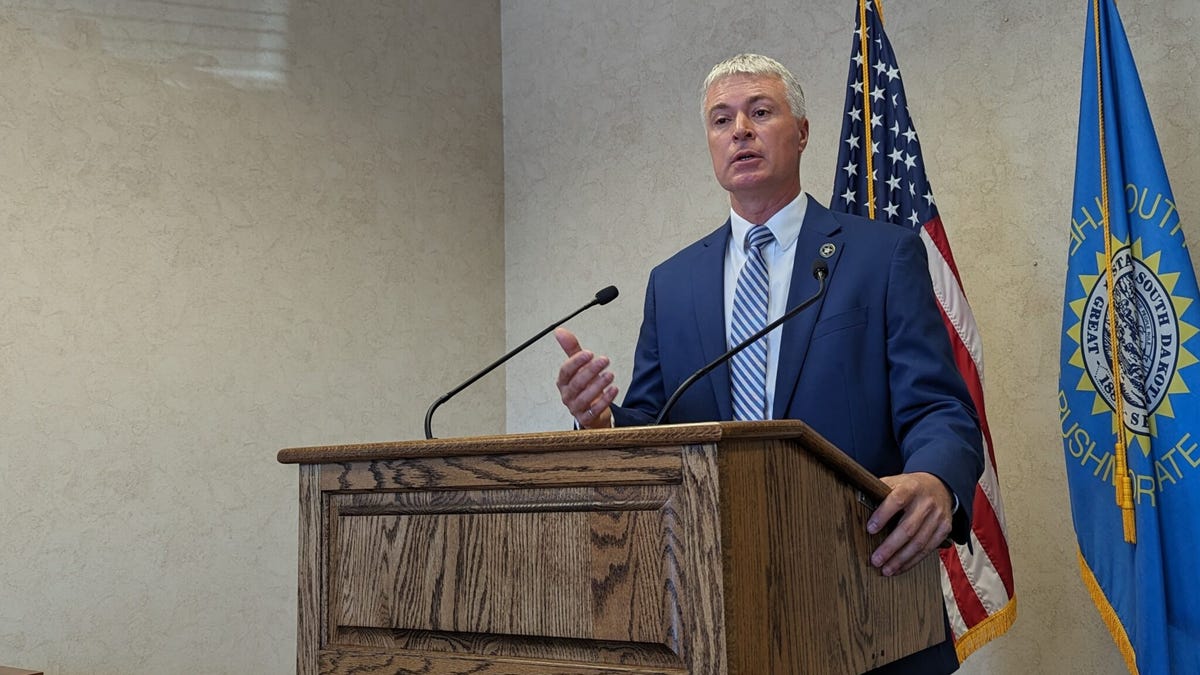Kim White lived only 32 years, but she knew a movie about her life couldn’t be short.
“When I met with her, she said, ‘I want to do my story big,’” said Dan Davis, the director of “Breaking Into Beautiful,” a documentary about the Utah influencer who shared every step of her six-year battle with cancer on Instagram, up until her death on Feb. 14, 2020.
“I don’t think she knew what that meant, entirely. And I don’t think I knew what that meant, entirely, until I started to dig into her story,” Davis said from the Farmington offices of his production company, Stiry. “Then she started to uncover parts of her story with us, and what that meant was a feature film.”
“Breaking Into Beautiful” made its debut Jan. 3 on the streaming service of the Provo-based distributor Angel Studios, known for promoting family-friendly and faith-based content.
White was diagnosed with adrenocortical carcinoma, a rare and aggressive cancer, in March 2014 — when the cancer caused a premature end to a pregnancy at 18 weeks. Kim and her husband, Treagan, were planning for a little boy to join them and their daughter, Hensleigh, in their Kaysville home.
(Angel Studios) Kim White is the subject of the documentary “Breaking Into Beautiful,” which chronicles the Kaysville woman’s six-year battle with cancer. The film is available for streaming on Angel Studios’ platform.
When she was diagnosed, Kim was told she would have two or three months to live. The movie shows how she decided to fight back hard, with aggressive treatments — including a liver operation in 2017 that she and her doctor referred to as “the Hail Mary,” as well as four infusions of the anti-cancer drug Keytruda.
White started documenting her cancer fight on Instagram. In the documentary, she says she did it in part because it was easier than sending texts and emails to all of her friends and relatives. At her death, she had gained some 124,000 Instagram followers.
Davis called White “a pioneer” for the way she shared her cancer fight. Before her, he said, “nobody was putting their health journeys on Instagram and social media” that way.
Davis said his production crew watched hundreds of hours of footage that White and her family shot at practically every stage of her treatment.
“There are just these beautiful and heartbreaking pieces of footage, and photos, that she had,” Davis said. “A lot of it was hard to watch, and hard to see because of how much pain and turmoil and trauma that she had been through. But it was beautiful because it existed.”
(Angel Studios) Kim White hugs her daughter, Hensleigh, in a moment from the documentary “Breaking Into Beautiful,” which chronicles the Kaysville woman’s six-year battle with cancer. The film is available for streaming on Angel Studios’ platform.
Davis had heard about White’s story — an employee pointed him to the Instagram account — but he connected with her through a mutual acquaintance: Dan Reynolds, the frontman for the rock band Imagine Dragons.
Davis’ company had worked with Reynolds on a short film to promote his nonprofit, the Tyler Robinson Foundation. Kim and Treagan White had attended one of the foundation’s galas in Las Vegas in 2019 — about a year before she died. She saw the short film and approached Davis.
“I always felt like hers was a story that I needed to tell, but I had never met her and never talked to her,” Davis said. “So it was pretty amazing to meet in that fashion, and have her just watch one of our films and then say, ‘I’ve been looking for someone to tell my story.’”
Reynolds was an early champion of White, and performed a solo acoustic concert in July 2014 to raise money to pay her medical bills. In February 2015, White was backstage at Ellen Degeneres’ talk show when Imagine Dragons performed.
Another celebrity who befriended White was Chris Harrison, the former host of ABC’s “The Bachelor” and “The Bachelorette” franchises. White met Harrison on the same trip to Hollywood when she was backstage at Ellen Degeneres’ show. She was a fan of “The Bachelor,” and he made it a point to invite her to that season’s “After the Rose” post-finale show — and got her a front-row seat every time she could attend.
Reynolds and Harrison are seen briefly in Davis’ documentary. Both attended White’s funeral and the “celebration of life” dance held the night before. Harrison is shown speaking on camera briefly outside her funeral.
(Angel Studios) Kim White, right, talks with her husband, Treagan White, in a moment from the documentary “Breaking Into Beautiful,” which chronicles the Kaysville woman’s six-year battle with cancer. The film is available for streaming on Angel Studios’ platform.
Davis conducted the movie’s main interview with Kim White in October 2019. A few hours later, she was rushed to the emergency room because a tumor was closing off the airway to her lungs.
“It was a little scary, to be honest,” Davis said of that interview. “She was coughing a lot, and we were really worried about her. … She decided, ‘I’m getting up, I’m getting ready, I’m going to do this.’ … As a documentarian, you want those raw moments, but you don’t want to have anything that scary.”
Davis said getting the movie finished hit many hurdles. The lockdowns from the COVID-19 pandemic began just a month after White’s death. Also, many of her Instagram posts featured popular songs, and getting the music licenses took time. (One song in the film, “Disappear,” was recorded by musician Aja Volkman, Reynolds’ now-ex-wife, who wrote the song specifically for White.)
One question that “Breaking Into Beautiful” explores is why, out of thousands of stories of cancer diagnoses and fights, Kim White’s battle resonated with so many people. Davis said the answer is White herself.
“Kim just had these kind eyes, welcoming eyes,” Davis said. “She was a fierce, competitive, driven person, and you just could see that, even through her social media.”
With her cancer diagnosis, Davis said, “people want to know what that’s like, because they have loved ones or friends or acquaintances that are going through a cancer battle, but they have no idea, really, what it’s like. And Kim told you exactly what it was like … and she didn’t hold anything back.”































